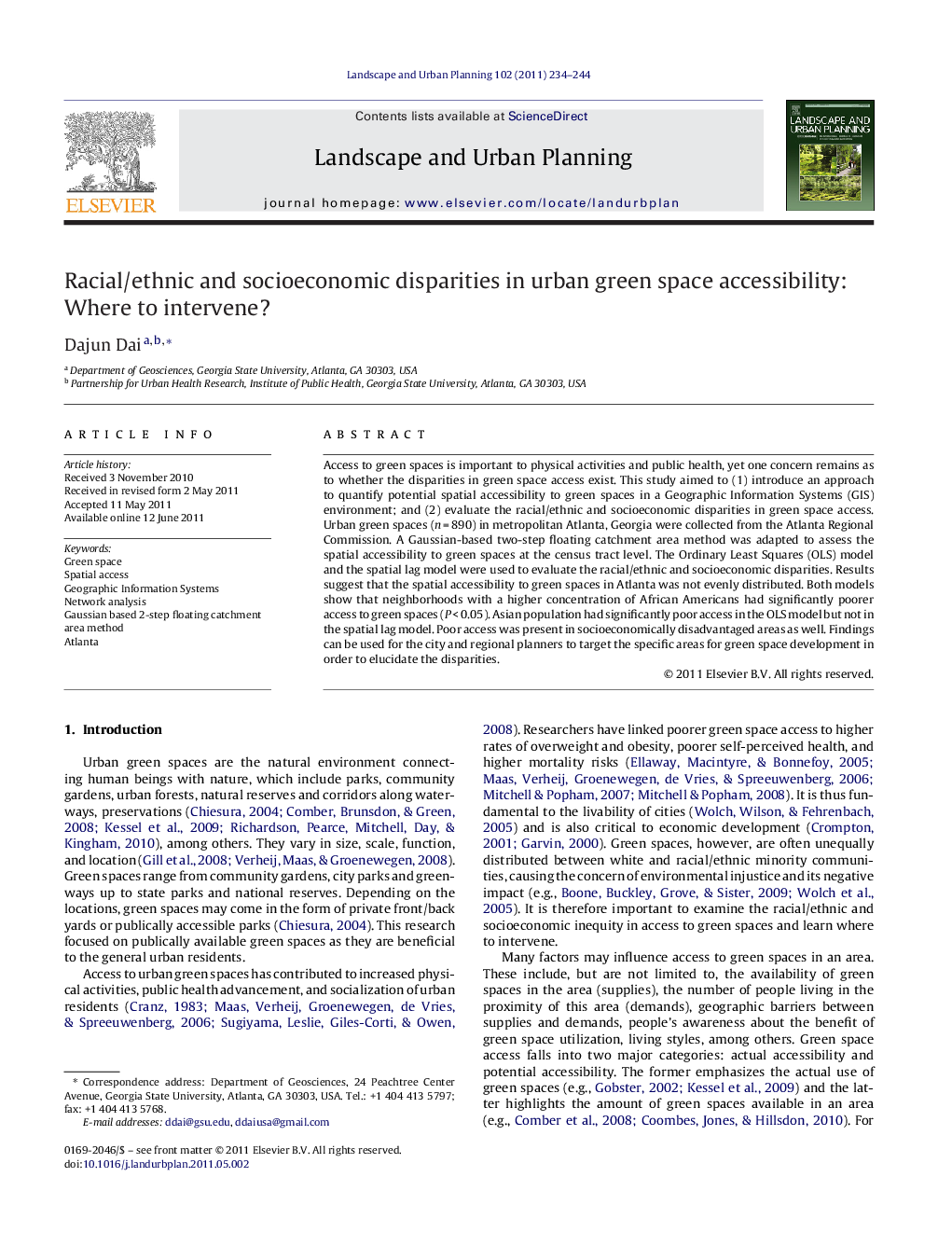| Article ID | Journal | Published Year | Pages | File Type |
|---|---|---|---|---|
| 1049709 | Landscape and Urban Planning | 2011 | 11 Pages |
Access to green spaces is important to physical activities and public health, yet one concern remains as to whether the disparities in green space access exist. This study aimed to (1) introduce an approach to quantify potential spatial accessibility to green spaces in a Geographic Information Systems (GIS) environment; and (2) evaluate the racial/ethnic and socioeconomic disparities in green space access. Urban green spaces (n = 890) in metropolitan Atlanta, Georgia were collected from the Atlanta Regional Commission. A Gaussian-based two-step floating catchment area method was adapted to assess the spatial accessibility to green spaces at the census tract level. The Ordinary Least Squares (OLS) model and the spatial lag model were used to evaluate the racial/ethnic and socioeconomic disparities. Results suggest that the spatial accessibility to green spaces in Atlanta was not evenly distributed. Both models show that neighborhoods with a higher concentration of African Americans had significantly poorer access to green spaces (P < 0.05). Asian population had significantly poor access in the OLS model but not in the spatial lag model. Poor access was present in socioeconomically disadvantaged areas as well. Findings can be used for the city and regional planners to target the specific areas for green space development in order to elucidate the disparities.
► Gaussian based 2-step floating catchment area method is introduced to quantify green space accessibility. ► Geographic disparities in green space access are evidenced in Atlanta, Georgia. ► Neighborhoods dominated by African Americans are deprived in green space access. ► Neighborhoods with low socioeconomic status have poor access to green spaces.
